Mitophagy in Doxorubicin-Induced Cardiotoxicity: Insights into Molecular Biology and Novel Therapeutic Strategies
Abstract
1. Introduction
2. The Basic Concept and Function of Mitophagy
2.1. Major Pathways Involved in Mitophagy
2.1.1. Ubiquitin-Dependent Pathway-Mediated Mitophagy: PINK1/Parkin
2.1.2. Parkin-Independent Ubiquitin-Dependent Pathway
2.1.3. The Role of Other E3 Ubiquitin Ligases in Mitophagy
2.2. The Main Functions Performed by Mitophagy
2.2.1. Maintains Mitochondrial Homeostasis
2.2.2. Prevents Cell Damage
2.2.3. Promotes Cell Survival
3. The Effects of DOX on Mitophagy
3.1. DOX Affects Mitophagy Through the PINK1–Parkin Pathway
3.2. DOX Affects Mitophagy via Bnip3
4. The Pathogenesis of Mitophagy in DIC
4.1. Mitochondrial Dysfunction
4.2. Changes in the Structure and Function of the Heart
5. Therapeutic Strategies That Target Mitophagy
5.1. Pharmaceutical Drugs
5.1.1. Vericiguat
5.1.2. Metformin
5.1.3. Neuraminidase 1 Inhibitors
5.1.4. Donepezil
5.2. Traditional Medicine
5.2.1. Sphingosylphosphorylcholine
5.2.2. Harpagoside
5.2.3. Ellagic Acid
5.2.4. Berberine
5.2.5. Mesaconine
5.3. Potential Targets
5.3.1. Rubicon
5.3.2. Mdivi-1
5.3.3. MiR-147-y
5.3.4. IGF-IIR
5.3.5. SESN2
| Name | Chemical Structure | Classification | Model | DOX Treatment | Role in Mitophagy | Cardiac Phenotype | Refs |
|---|---|---|---|---|---|---|---|
| Vericiguat | 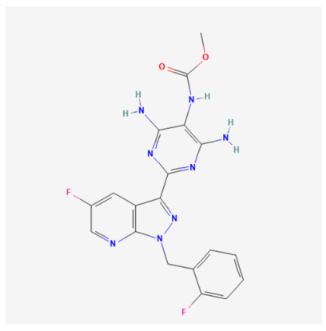 | Pharmaceutical drugs | NRCM | 1 μM | ↑ Mitophagy | ↑ Mitochondrial function ↓ Inflammatory factors | [99] |
| Metformin | 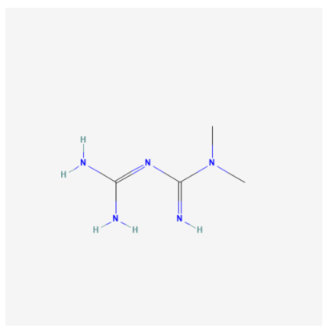 | Pharmaceutical drugs | H9C2 | 1 µM | ↓ Mitophagy | ↓ Cardiomyocyte death | [103] |
| Oseltamivir | 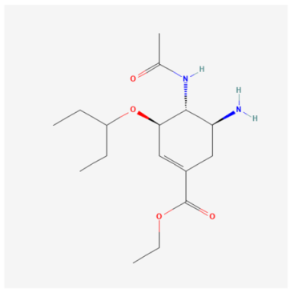 | Pharmaceutical drugs | Rat | 15 mg/kg | ↓ Mitophagy | ↑ Cardiac function ↓ Fibrosis ↓ Myocardial injury | [109] |
| Donepezil | 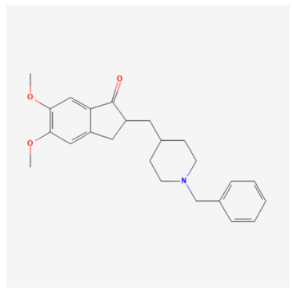 | Pharmaceutical drugs | Rat | 18 mg/kg | ↓ Mitophagy | ↑ Cardiac function ↓ Inflammation ↓ Oxidative stress | [113] |
| SPC |  | Traditional medicine | Zebrafish | 20 μg/g | ↓ Mitophagy | ↓ Pericardial edema ↓ Myocardial vacuolization ↓ Apoptosis | [117] |
| Harpagoside | 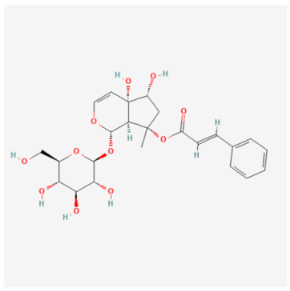 | Traditional medicine | Mouse | 20 mg/kg | ↓ Mitophagy | ↑ Cardiac function ↓ Apoptosis ↓ Oxidative stress | [79] |
| Ellagic acid | 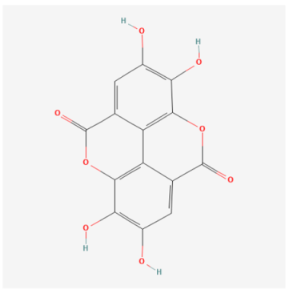 | Traditional medicine | NRCM | 10 μM | ↓ Mitophagy | ↓ Cell death | [125] |
| Berberine | 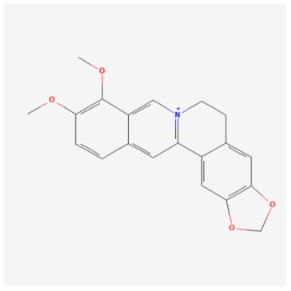 | Traditional medicine | Zebrafish | 50 μg/g | ↑ Mitophagy | ↓ Cardiac dysfunction ↓ Cytotoxicity ↓ Apoptosis | [128] |
| Mesaconine |  | Traditional medicine | Mouse | 3.5 mg/kg | ↑ Mitophagy | ↓ Oxidative stress ↑ Cardiac function | [95] |
| Rubicon | / | Potential targets | Mouse | 20 mg/kg | ↑ Mitophagy | ↑ Cytoplasmic vacuolization ↑ ROS levels ↓ ATP content | [135] |
| Mdivi-1 | / | Potential targets | Mouse | 12mg/kg | ↓ Mitophagy | ↑ Cardiac function | [137] |
| MiR-147-y | / | Potential targets | Neonatal pig cardiomyocyte | 5 mM | ↑ Mitophagy | ↓ Apoptosis ↓ Cell death | [141] |
| IGF-IIR | / | Potential targets | Rat | 5 mg/kg | ↓ Mitophagy | ↑ Apoptosis ↑ Oxidative stress | [142] |
| SESN2 | / | Potential targets | Rat | 4 mg/kg | ↑ Mitophagy | ↓ Apoptosis ↓ Mitochondrial injury ↓ Cardiac dysfunction | [78] |
6. Problems and Challenges
6.1. The Dual Role of Autophagy and Mitophagy
6.2. The Complexity of DOX Regulation of Mitophagy
6.3. Contradictory Findings
7. Possible Solutions
7.1. Deepen the Study of Mechanisms
7.2. Consider Multiple Factors
7.3. Carry out Preclinical Validation
7.4. Clinical Translational Research
7.5. Multidisciplinary Collaboration
8. Conclusions
Author Contributions
Funding
Institutional Review Board Statement
Informed Consent Statement
Acknowledgments
Conflicts of Interest
References
- Yan, M.; Luo, X.; Han, H.; Qiu, J.; Ye, Q.; Zhang, L.; Wang, Y. ROCK2 increases drug resistance in acute myeloid leukemia via metabolic reprogramming and MAPK/PI3K/AKT signaling. Int. Immunopharmacol. 2024, 140, 112897. [Google Scholar] [CrossRef] [PubMed]
- Levin, G.; Gilbert, L.; Leung, S.O.A.; Zeng, X.; Mandilaras, V.; Bernard, L. Doxorubicin and trabectedin for recurrent leiomyosarcoma—A case report. Gynecol. Oncol. Rep. 2024, 55, 101497. [Google Scholar] [CrossRef] [PubMed]
- Verma, K.K.; Matthew, E.J.; Wealther, R.; Pendse, R.; Tarbox, M. Strategies for Diagnosing and Treating Disseminated Methicillin-Sensitive Staphylococcus aureus Infections: Insights From a Pustular Eruption. Cureus 2024, 16, e67516. [Google Scholar] [CrossRef]
- Mori, M.; Sakai, T.; Oka, T.; Moriyoshi, K.; Kawabata, H. Development of Diffuse Large B-cell Lymphoma Serendipitously Led to Life-Saving Treatment in a Patient with Refractory Classical Hodgkin Lymphoma. Intern. Med. 2024, 4334-24. [Google Scholar] [CrossRef]
- Sayed, F.A.; Mohamed, A.S.; Fahmy, H.M. Doxorubicin-loaded methoxy-intercalated kaolinite as a repackaging of doxorubicin for an enhanced breast cancer treatment: In vitro and in vivo investigation. Nanotechnology 2024, 36, 025101. [Google Scholar] [CrossRef] [PubMed]
- Al-Hussaniy, H.A.; Al-Zobaidy, M.J. Effects of Mdm2 Inhibitors on Cellular Viability of Breast Cancer Cell Lines HP100, MCF7. Bratisl. Lek. Listy 2024, 125, 627–634. [Google Scholar] [CrossRef]
- Cheng, Y.; Li, J.; Feng, X.; Wu, Y.; Wu, X.; Lau, B.W.M.; Ng, S.S.M.; Lee, S.M.; Seto, S.W.; Leung, G.P.; et al. Taohong Siwu decoction enhances the chemotherapeutic efficacy of doxorubicin by promoting tumor vascular normalization. Phytomedicine 2024, 134, 155995. [Google Scholar] [CrossRef]
- Meinag, F.E.; Fatahi, M.; Vahedian, V.; Maroufi, N.F.; Mosayyebi, B.; Ahmadi, E.; Rahmati, M. Modulatory effects of miRNAs in doxorubicin resistance: A mechanistic view. Funct. Integr. Genom. 2024, 24, 150. [Google Scholar] [CrossRef]
- Yang, J.; Liu, B.; Wang, Q.; Yan, H.; Li, G.; Wang, X.; Shang, Z.; Ou, T.; Chen, W. Carboxylated mesoporous silica nanoparticle-nucleic acid chimera conjugate-assisted delivery of siRNA and doxorubicin effectively treat drug-resistant bladder cancer. Biomed. Pharmacother. 2024, 178, 117185. [Google Scholar] [CrossRef]
- Mitsui, Y.; Okawa, M.; Hori, S.; Uetani, M.; Kasahara, M.; Yamabe, F.; Kobayashi, H.; Nagao, K.; Nakajima, K. Effectiveness of dose-dense methotrexate, vinblastine, doxorubicin, and cisplatin as compared to gemcitabine-based regimens as neoadjuvant chemotherapy for oncologic outcomes in muscle-invasive bladder cancer cases-Single-center study in Japan. Int. J. Urol. 2024, 31, 1030–1037. [Google Scholar] [CrossRef]
- Yang, L.; Li, H.; Luo, A.; Zhang, Y.; Chen, H.; Zhu, L.; Yang, D. Macrophage membrane-camouflaged pH-sensitive nanoparticles for targeted therapy of oral squamous cell carcinoma. J. Nanobiotechnology 2024, 22, 168. [Google Scholar] [CrossRef] [PubMed]
- Conconi, A.; Chiappella, A.; Ferreri, A.J.M.; Stathis, A.; Botto, B.; Sassone, M.; Gaidano, G.; Balzarotti, M.; Merli, F.; Tucci, A.; et al. IELSG30 phase 2 trial: Intravenous and intrathecal CNS prophylaxis in primary testicular diffuse large B-cell lymphoma. Blood Adv. 2024, 8, 1541–1549. [Google Scholar] [CrossRef]
- Teng, Y.; Li, Z.; Liu, J.; Teng, L.; Li, H. Synergistic Effect of Doxorubicin and Blue Light Irradiation on the Antitumor Treatment of HepG2 Cells in Liver Cancer. Molecules 2024, 29, 3360. [Google Scholar] [CrossRef] [PubMed]
- Awadalla, A.; Hamam, E.T.; Mostafa, S.A.; Mahmoud, S.A.; Elazab, K.M.; El Nakib, A.M.; Eldesoqui, M.; El-Sherbiny, M.; Ammar, O.A.; Al-Serwi, R.H.; et al. Hepatoprotective Effects of Hyaluronic Acid-Preconditioned Bone Marrow Mesenchymal Stem Cells against Liver Toxicity via the Inhibition of Apoptosis and the Wnt/β-Catenin Signaling Pathway. Cells 2023, 12, 1526. [Google Scholar] [CrossRef]
- Desrosiers, A.; Derbali, R.M.; Hassine, S.; Berdugo, J.; Long, V.; Lauzon, D.; De Guire, V.; Fiset, C.; DesGroseillers, L.; Leblond Chain, J.; et al. Programmable self-regulated molecular buffers for precise sustained drug delivery. Nat. Commun. 2022, 13, 6504. [Google Scholar] [CrossRef]
- Maharjan, S.; Lee, M.G.; Lee, K.S.; Nam, K.S. Morin overcomes doxorubicin resistance in human breast cancer by inducing DNA damage and modulating the LKB1/AMPK/mTORC1 signaling pathway. Biofactors 2024. Epub ahead of print. [Google Scholar] [CrossRef]
- Tassone, G.; Maramai, S.; Paolino, M.; Lamponi, S.; Poggialini, F.; Dreassi, E.; Petricci, E.; Alcaro, S.; Pozzi, C.; Romeo, I. Exploiting the bile acid binding protein as transporter of a Cholic Acid/Mirin bioconjugate for potential applications in liver cancer therapy. Sci. Rep. 2024, 14, 22514. [Google Scholar] [CrossRef] [PubMed]
- Szczęśniak-Sięga, B.M.; Zaręba, N.; Czyżnikowska, Ż.; Janek, T.; Kepinska, M. Rational Design, Synthesis, Molecular Docking, and Biological Evaluations of New Phenylpiperazine Derivatives of 1,2-Benzothiazine as Potential Anticancer Agents. Molecules 2024, 29, 4282. [Google Scholar] [CrossRef]
- Dantas, D.; Pereira, A.G.; Fujimori, A.S.S.; Ribeiro, A.P.D.; de Almeida Silva, C.C.V.; Monte, M.G.; Corrêa, C.R.; Fernandes, A.A.; Bazan, S.G.Z.; Azevedo, P.S.; et al. Doxycycline Attenuates Doxorubicin-Induced Cardiotoxicity by Improving Myocardial Energy Metabolism in Rats. J. Cardiovasc. Dev. Dis. 2022, 9, 254. [Google Scholar] [CrossRef]
- Gao, F.; Xu, T.; Zang, F.; Luo, Y.; Pan, D. Cardiotoxicity of Anticancer Drugs: Molecular Mechanisms, Clinical Management and Innovative Treatment. Drug Des. Devel. Ther. 2024, 18, 4089–4116. [Google Scholar] [CrossRef]
- Kong, C.Y.; Guo, Z.; Song, P.; Zhang, X.; Yuan, Y.P.; Teng, T.; Yan, L.; Tang, Q.Z. Underlying the Mechanisms of Doxorubicin-Induced Acute Cardiotoxicity: Oxidative Stress and Cell Death. Int. J. Biol. Sci. 2022, 18, 760–770. [Google Scholar] [CrossRef] [PubMed]
- Meng, Y.; Sun, J.; Zhang, G.; Yu, T.; Piao, H. Fasting: A Complex, Double-Edged Blade in the Battle Against Doxorubicin-Induced Cardiotoxicity. Cardiovasc. Toxicol. 2024, 24, 1395–1409. [Google Scholar] [CrossRef] [PubMed]
- Chen, G.; Yao, Y.; Liu, Y.; Zhang, R.; Wen, C.; Zhou, Q.; Xu, Y.; Wang, W.; Jiang, H.; Tao, Z.; et al. IKKα-STAT3-S727 axis: A novel mechanism in DOX-induced cardiomyopathy. Cell Mol. Life Sci. 2024, 81, 406. [Google Scholar] [CrossRef] [PubMed]
- Zheng, Y.; Xiang, G.; Zeng, L.; Yang, C.; Ke, J.; Yu, H.; Zhang, J. MiR-24-3p modulates cardiac function in doxorubicin -induced heart failure via the Sp1/PI3K signaling pathway. Cell Signal 2024, 124, 111407. [Google Scholar] [CrossRef]
- Mf, N.M.; Arunachalam, S.; Sheikh, A.; Saraswathiamma, D.; Albawardi, A.; Al Marzooqi, S.; Jha, N.K.; Subramanya, S.; Beiram, R.; Ojha, S. α-Bisabolol: A Dietary Sesquiterpene that Attenuates Apoptotic and Nonapoptotic Cell Death Pathways by Regulating the Mitochondrial Biogenesis and Endoplasmic Reticulum Stress-Hippo Signaling Axis in Doxorubicin-Induced Acute Cardiotoxicity in Rats. ACS Pharmacol. Transl. Sci. 2024, 7, 2694–2705. [Google Scholar] [CrossRef]
- Xue, S.; Chen, H.; Zhang, J.; Tian, R.; Xie, C.; Sun, Q.; Wang, H.; Shi, T.; Guo, D.; Wang, Y.; et al. Qishen granule alleviates doxorubicin-induced cardiotoxicity by suppressing ferroptosis via nuclear erythroid factor 2-related factor 2 (Nrf2) pathway. J. Ethnopharmacol. 2024, 335, 118604. [Google Scholar] [CrossRef]
- Yu, J.; Liu, M.; Zhang, C.; Cheng, L.; Peng, C.; Jiang, D.; Liu, W.; Jin, H.; Ren, J. ROS-responsive glycol chitosan-linked prodrug nanoparticle as a nanoplatform for tumor chemo-photodynamic therapy. Pharm. Dev. Technol. 2024, Epub ahead of print, 1–10. [Google Scholar] [CrossRef]
- Miranda, M.R.; Basilicata, M.G.; Vestuto, V.; Aquino, G.; Marino, P.; Salviati, E.; Ciaglia, T.; Domínguez-Rodríguez, G.; Moltedo, O.; Campiglia, P.; et al. Anticancer Therapies Based on Oxidative Damage: Lycium barbarum Inhibits the Proliferation of MCF-7 Cells by Activating Pyroptosis through Endoplasmic Reticulum Stress. Antioxidants 2024, 13, 708. [Google Scholar] [CrossRef]
- Chen, J.; Chapski, D.J.; Jong, J.; Awada, J.; Wang, Y.; Slamon, D.J.; Vondriska, T.M.; Packard, R.R.S. Integrative transcriptomics and cell systems analyses reveal protective pathways controlled by Igfbp-3 in anthracycline-induced cardiotoxicity. FASEB J. Off. Publ. Fed. Am. Soc. Exp. Biol. 2023, 37, e22977. [Google Scholar] [CrossRef]
- Salunkhe, S.; Mishra, S.V.; Nair, J.; Ghosh, S.; Choudhary, N.; Kaur, E.; Shah, S.; Patkar, K.; Anand, D.; Khattry, N.; et al. Inhibition of novel GCN5-ATM axis restricts the onset of acquired drug resistance in leukemia. Int. J. Cancer 2018, 142, 2175–2185. [Google Scholar] [CrossRef]
- Qiu, H.; Huang, S.; Liu, Y.; Liu, L.; Guo, F.; Guo, Y.; Li, D.; Cen, X.; Chen, Y.; Zhang, M.; et al. Idebenone alleviates doxorubicin-induced cardiotoxicity by stabilizing FSP1 to inhibit ferroptosis. Acta Pharm. Sin. B 2024, 14, 2581–2597. [Google Scholar] [CrossRef] [PubMed]
- Lin, Z.; Wu, C.; Song, D.; Zhu, C.; Wu, B.; Wang, J.; Xue, Y. Sarmentosin alleviates doxorubicin-induced cardiotoxicity and ferroptosis via the p62-Keap1-Nrf2 pathway. Redox Rep. 2024, 29, 2392329. [Google Scholar] [CrossRef]
- Poillet-Perez, L.; Sharp, D.W.; Yang, Y.; Laddha, S.V.; Ibrahim, M.; Bommareddy, P.K.; Hu, Z.S.; Vieth, J.; Haas, M.; Bosenberg, M.W.; et al. Autophagy promotes growth of tumors with high mutational burden by inhibiting a T-cell immune response. Nat. Cancer 2020, 1, 923–934. [Google Scholar] [CrossRef] [PubMed]
- Li, M.; Sala, V.; De Santis, M.C.; Cimino, J.; Cappello, P.; Pianca, N.; Di Bona, A.; Margaria, J.P.; Martini, M.; Lazzarini, E.; et al. Phosphoinositide 3-Kinase Gamma Inhibition Protects From Anthracycline Cardiotoxicity and Reduces Tumor Growth. Circulation 2018, 138, 696–711. [Google Scholar] [CrossRef]
- Liu, Y.; Reiken, S.; Dridi, H.; Yuan, Q.; Mohammad, K.S.; Trivedi, T.; Miotto, M.C.; Wedderburn-Pugh, K.; Sittenfeld, L.; Kerley, Y.; et al. Targeting ryanodine receptor type 2 to mitigate chemotherapy-induced neurocognitive impairments in mice. Sci. Transl. Med. 2023, 15, eadf8977. [Google Scholar] [CrossRef]
- Zhu, J.; Zhang, X.; Xie, H.; Wang, Y.; Zhang, X.; Lin, Z. Cardiomyocyte Stim1 Deficiency Exacerbates Doxorubicin Cardiotoxicity by Magnification of Endoplasmic Reticulum Stress. J. Inflamm. Res. 2021, 14, 3945–3958. [Google Scholar] [CrossRef] [PubMed]
- Sambuceti, G.; Cossu, V.; Vitale, F.; Bianconi, E.; Carta, S.; Venturi, C.; Chiesa, S.; Lanfranchi, F.; Emionite, L.; Carlone, S.; et al. Mandatory role of endoplasmic reticulum and its pentose phosphate shunt in the myocardial defense mechanisms against the redox stress induced by anthracyclines. Mol. Cell Biochem. 2023, 479, 2973–2987. [Google Scholar] [CrossRef] [PubMed]
- Dadson, K.; Thavendiranathan, P.; Hauck, L.; Grothe, D.; Azam, M.A.; Stanley-Hasnain, S.; Mahiny-Shahmohammady, D.; Si, D.; Bokhari, M.; Lai, P.F.H.; et al. Statins Protect Against Early Stages of Doxorubicin-induced Cardiotoxicity Through the Regulation of Akt Signaling and SERCA2. CJC Open 2022, 4, 1043–1052. [Google Scholar] [CrossRef]
- Green, D.R.; Galluzzi, L.; Kroemer, G. Mitochondria and the autophagy-inflammation-cell death axis in organismal aging. Science 2011, 333, 1109–1112. [Google Scholar] [CrossRef]
- Choubey, V.; Zeb, A.; Kaasik, A. Molecular Mechanisms and Regulation of Mammalian Mitophagy. Cells 2021, 11, 38. [Google Scholar] [CrossRef]
- Dong, Y.; Zhang, X. Targeting cellular mitophagy as a strategy for human cancers. Front. Cell Dev. Biol. 2024, 12, 1431968. [Google Scholar] [CrossRef] [PubMed]
- Narendra, D.P.; Youle, R.J. The role of PINK1-Parkin in mitochondrial quality control. Nat. Cell Biol. 2024, 26, 1639–1651. [Google Scholar] [CrossRef] [PubMed]
- Gan, Z.Y.; Komander, D.; Callegari, S. Reassessing kinetin’s effect on PINK1 and mitophagy. Autophagy 2024, 20, 2596–2597. [Google Scholar] [CrossRef] [PubMed]
- Zhu, J.Y.; Duan, J.; van de Leemput, J.; Han, Z. Dysfunction of Mitochondrial Dynamics Induces Endocytosis Defect and Cell Damage in Drosophila Nephrocytes. Cells 2024, 13, 1253. [Google Scholar] [CrossRef]
- Eldeeb, M.A.; Esmaili, M.; Hassan, M.; Ragheb, M.A. The Role of PTEN-L in Modulating PINK1-Parkin-Mediated Mitophagy. Neurotox. Res. 2022, 40, 1103–1114. [Google Scholar] [CrossRef]
- Iriondo, M.N.; Etxaniz, A.; Varela, Y.R.; Ballesteros, U.; Hervás, J.H.; Montes, L.R.; Goñi, F.M.; Alonso, A. LC3 subfamily in cardiolipin-mediated mitophagy: A comparison of the LC3A, LC3B and LC3C homologs. Autophagy 2022, 18, 2985–3003. [Google Scholar] [CrossRef]
- Endo, R.; Kinefuchi, H.; Sawada, M.; Kikuchi, R.; Kojima, W.; Matsuda, N.; Yamano, K. TBK1 adaptor AZI2/NAP1 regulates NDP52-driven mitochondrial autophagy. J. Biol. Chem. 2024, 300, 107775. [Google Scholar] [CrossRef]
- Yu, S.; Zhu, W.; Yu, L. The role of rapamycin in the PINK1/Parkin signaling pathway in mitophagy in podocytes. Open Life Sci. 2024, 19, 20220958. [Google Scholar] [CrossRef]
- Han, D.; Su, T.; Wang, M.; Zhang, R.; Xu, H.; Chu, R.; Zhu, Z.; Shen, Y.; Wang, N.; He, S.; et al. JAK2 inhibitor protects the septic heart through enhancing mitophagy in cardiomyocytes. Biomed. Pharmacother. 2024, 178, 117279. [Google Scholar] [CrossRef]
- Sun, X.; Ye, G.; Li, J.; Yuan, L.; Bai, G.; Xu, Y.J.; Zhang, J. The tumor suppressor Parkin exerts anticancer effects through regulating mitochondrial GAPDH activity. Oncogene 2024, 43, 3215–3226. [Google Scholar] [CrossRef]
- Mukherjee, R.; Chakrabarti, O. Ubiquitin-mediated regulation of the E3 ligase GP78 by MGRN1 in trans affects mitochondrial homeostasis. J. Cell Sci. 2016, 129, 757–773. [Google Scholar] [CrossRef] [PubMed]
- Hu, L.; Wang, P.; Zhao, R.; Li, S.; Wang, F.; Li, C.; Cao, L.; Wu, S. The Drosophila F-box protein Slimb controls dSmurf protein turnover to regulate the Hippo pathway. Biochem. Biophys. Res. Commun. 2017, 482, 317–322. [Google Scholar] [CrossRef] [PubMed]
- Orvedahl, A.; Sumpter, R., Jr.; Xiao, G.; Ng, A.; Zou, Z.; Tang, Y.; Narimatsu, M.; Gilpin, C.; Sun, Q.; Roth, M.; et al. Image-based genome-wide siRNA screen identifies selective autophagy factors. Nature 2011, 480, 113–117. [Google Scholar] [CrossRef]
- Lokireddy, S.; Wijesoma, I.W.; Teng, S.; Bonala, S.; Gluckman, P.D.; McFarlane, C.; Sharma, M.; Kambadur, R. The ubiquitin ligase Mul1 induces mitophagy in skeletal muscle in response to muscle-wasting stimuli. Cell Metab. 2012, 16, 613–624. [Google Scholar] [CrossRef] [PubMed]
- Li, J.; Qi, W.; Chen, G.; Feng, D.; Liu, J.; Ma, B.; Zhou, C.; Mu, C.; Zhang, W.; Chen, Q.; et al. Mitochondrial outer-membrane E3 ligase MUL1 ubiquitinates ULK1 and regulates selenite-induced mitophagy. Autophagy 2015, 11, 1216–1229. [Google Scholar] [CrossRef]
- Alan, P.; Vandevoorde, K.R.; Joshi, B.; Cardoen, B.; Gao, G.; Mohammadzadeh, Y.; Hamarneh, G.; Nabi, I.R. Basal Gp78-dependent mitophagy promotes mitochondrial health and limits mitochondrial ROS. Cell Mol. Life Sci. 2022, 79, 565. [Google Scholar] [CrossRef] [PubMed]
- Fu, M.; St-Pierre, P.; Shankar, J.; Wang, P.T.; Joshi, B.; Nabi, I.R. Regulation of mitophagy by the Gp78 E3 ubiquitin ligase. Mol. Biol. Cell 2013, 24, 1153–1162. [Google Scholar] [CrossRef]
- Niemi, N.M.; Friedman, J.R. Coordinating BNIP3/NIX-mediated mitophagy in space and time. Biochem. Soc. Trans. 2024, 52, 1969–1979. [Google Scholar] [CrossRef]
- Joof, A.N.; Ren, F.; Zhou, Y.; Wang, M.; Li, J.; Tan, Y. Targeting Mitochondria: Influence of Metabolites on Mitochondrial Heterogeneity. Cell Biochem. Funct. 2024, 42, e4131. [Google Scholar] [CrossRef]
- Abraham, O.; Ben-Dor, S.; Goliand, I.; Haffner-Krausz, R.; Colaiuta, S.P.; Kovalenko, A.; Yaron, A. Siah3 acts as a physiological mitophagy suppressor that facilitates axonal degeneration. Sci. Signal 2024, 17, eadn5805. [Google Scholar] [CrossRef]
- Cho, S.I.; Jo, E.R.; Jang, H.S. Urolithin A prevents age-related hearing loss in C57BL/6J mice likely by inducing mitophagy. Exp. Gerontol. 2024, 197, 112589. [Google Scholar] [CrossRef] [PubMed]
- Yang, J.; Wu, Q.; Li, Y.; Zhang, Y.; Lan, S.; Yuan, K.; Dai, J.; Sun, B.; Meng, Y.; Xu, S.; et al. BL-918 Alleviates Early Brain Injury in Rats After Subarachnoid Hemorrhage by Reducing Oxidative Stress and Promoting Mitophagy Through the ULK1/PINK1/Parkin Pathway. Free Radic. Biol. Med. 2024, 224, 846–861. [Google Scholar] [CrossRef] [PubMed]
- Song, J.; Li, S.; Zhang, B.; Wu, J.; Zhong, A. Quercetin protects human coronary artery endothelial cells against hypoxia/reoxygenation-induced mitochondrial apoptosis via the Nrf2/HO-1 axis. Biomed. Res. 2024, 45, 197–207. [Google Scholar] [CrossRef] [PubMed]
- Guo, Q.; Wang, J.; Ni, C.; Pan, J.; Zou, J.; Shi, Y.; Sun, J.; Zhang, X.; Wang, D.; Luan, F. Research progress on the natural products in the intervention of myocardial infarction. Front. Pharmacol. 2024, 15, 1445349. [Google Scholar] [CrossRef]
- Shteinfer-Kuzmine, A.; Verma, A.; Bornshten, R.; Ben Chetrit, E.; Ben-Ya’acov, A.; Pahima, H.; Rubin, E.; Mograbi, Y.; Shteyer, E.; Shoshan-Barmatz, V. Elevated serum mtDNA in COVID-19 patients is linked to SARS-CoV-2 envelope protein targeting mitochondrial VDAC1, inducing apoptosis and mtDNA release. Apoptosis 2024, 29, 2025–2046. [Google Scholar] [CrossRef]
- Wu, G.; Liu, J.; Ma, G.; Wei, Q.; Song, X. Hyperuricemia Facilitates Uric Acid-Mediated Vascular Endothelial Cell Damage by Inhibiting Mitophagy. Cell Biochem. Biophys. 2024. Epub ahead of print. [Google Scholar] [CrossRef]
- Sun, J.; Ding, J.; Yue, H.; Xu, B.; Sodhi, A.; Xue, K.; Ren, H.; Qian, J. Hypoxia-induced BNIP3 facilitates the progression and metastasis of uveal melanoma by driving metabolic reprogramming. Autophagy 2024, Epub ahead of print, 1–19. [Google Scholar] [CrossRef]
- Chen, W.; Zhao, H.; Li, Y. Mitochondrial dynamics in health and disease: Mechanisms and potential targets. Signal Transduct. Target. Ther. 2023, 8, 333. [Google Scholar] [CrossRef]
- Hu, Y.; Yu, J.; He, W.; Qiao, Y.; Cheng, X.; Huang, H.; Lai, S.; Yin, D.; He, H. Astragaloside IV intervenes multi-regulatory cell death forms against doxorubicin-induced cardiotoxicity by regulating AMPKα2 pathway. Int. Immunopharmacol. 2024, 142, 113078. [Google Scholar] [CrossRef]
- Wang, D.B.; Kinoshita, C.; Kinoshita, Y.; Morrison, R.S. p53 and mitochondrial function in neurons. Biochim. Biophys. Acta 2014, 1842, 1186–1197. [Google Scholar] [CrossRef]
- Goiran, T.; Duplan, E.; Rouland, L.; El Manaa, W.; Lauritzen, I.; Dunys, J.; You, H.; Checler, F.; Alves da Costa, C. Nuclear p53-mediated repression of autophagy involves PINK1 transcriptional down-regulation. Cell Death Differ. 2018, 25, 873–884. [Google Scholar] [CrossRef] [PubMed]
- Guerra, G.; Russo, M.; Priolo, R.; Riganti, C.; Reano, S.; Filigheddu, N.; Hirsch, E.; Ghigo, A. Unravelling the metabolic rewiring in the context of doxorubicin-induced cardiotoxicity: Fuel preference changes from fatty acids to glucose oxidation. Vascul Pharmacol. 2024, 155, 107324. [Google Scholar] [CrossRef]
- Zhu, Y.; Ji, J.J.; Yang, R.; Han, X.Q.; Sun, X.J.; Ma, W.Q.; Liu, N.F. Lactate accelerates calcification in VSMCs through suppression of BNIP3-mediated mitophagy. Cell Signal 2019, 58, 53–64. [Google Scholar] [CrossRef]
- Dhingra, R.; Margulets, V.; Chowdhury, S.R.; Thliveris, J.; Jassal, D.; Fernyhough, P.; Dorn, G.W., 2nd; Kirshenbaum, L.A. Bnip3 mediates doxorubicin-induced cardiac myocyte necrosis and mortality through changes in mitochondrial signaling. Proc. Natl. Acad. Sci. USA 2014, 111, E5537–E5544. [Google Scholar] [CrossRef]
- Poole, L.P.; Bock-Hughes, A.; Berardi, D.E.; Macleod, K.F. ULK1 promotes mitophagy via phosphorylation and stabilization of BNIP3. Sci. Rep. 2021, 11, 20526. [Google Scholar] [CrossRef] [PubMed]
- Hoshino, A.; Mita, Y.; Okawa, Y.; Ariyoshi, M.; Iwai-Kanai, E.; Ueyama, T.; Ikeda, K.; Ogata, T.; Matoba, S. Cytosolic p53 inhibits Parkin-mediated mitophagy and promotes mitochondrial dysfunction in the mouse heart. Nat. Commun. 2013, 4, 2308. [Google Scholar] [CrossRef]
- Hull, T.D.; Boddu, R.; Guo, L.; Tisher, C.C.; Traylor, A.M.; Patel, B.; Joseph, R.; Prabhu, S.D.; Suliman, H.B.; Piantadosi, C.A.; et al. Heme oxygenase-1 regulates mitochondrial quality control in the heart. JCI Insight 2016, 1, e85817. [Google Scholar] [CrossRef]
- Wang, P.; Wang, L.; Lu, J.; Hu, Y.; Wang, Q.; Li, Z.; Cai, S.; Liang, L.; Guo, K.; Xie, J.; et al. SESN2 protects against doxorubicin-induced cardiomyopathy via rescuing mitophagy and improving mitochondrial function. J. Mol. Cell Cardiol. 2019, 133, 125–137. [Google Scholar] [CrossRef] [PubMed]
- Li, W.; Wang, X.; Liu, T.; Zhang, Q.; Cao, J.; Jiang, Y.; Sun, Q.; Li, C.; Wang, W.; Wang, Y. Harpagoside Protects Against Doxorubicin-Induced Cardiotoxicity via P53-Parkin-Mediated Mitophagy. Front. Cell Dev. Biol. 2022, 10, 813370. [Google Scholar] [CrossRef]
- Zheng, X.; Zhong, T.; Ma, Y.; Wan, X.; Qin, A.; Yao, B.; Zou, H.; Song, Y.; Yin, D. Bnip3 mediates doxorubicin-induced cardiomyocyte pyroptosis via caspase-3/GSDME. Life Sci. 2020, 242, 117186. [Google Scholar] [CrossRef]
- Khan, A.H.; Gu, X.; Patel, R.J.; Chuphal, P.; Viana, M.P.; Brown, A.I.; Zid, B.M.; Tsuboi, T. Mitochondrial protein heterogeneity stems from the stochastic nature of co-translational protein targeting in cell senescence. Nat. Commun. 2024, 15, 8274. [Google Scholar] [CrossRef] [PubMed]
- Díaz-Guerra, A.; Villena-Gutiérrez, R.; Clemente-Moragón, A.; Gómez, M.; Oliver, E.; Fernández-Tocino, M.; Galán-Arriola, C.; Cádiz, L.; Ibáñez, B. Anthracycline Cardiotoxicity Induces Progressive Changes in Myocardial Metabolism and Mitochondrial Quality Control: Novel Therapeutic Target. JACC CardioOncol 2024, 6, 217–232. [Google Scholar] [CrossRef]
- Zhao, Y.; Liang, J.; Liu, X.; Li, H.; Chang, C.; Gao, P.; Du, F.; Zhang, R. Tcap deficiency impedes striated muscle function and heart regeneration with elevated ROS and autophagy. Biochim. Biophys. Acta Mol. Basis Dis. 2024, 1870, 167485. [Google Scholar] [CrossRef] [PubMed]
- Gwon, J.G.; Lee, S.M. Role of PTEN-Induced Protein Kinase 1 as a Mitochondrial Dysfunction Regulator in Cardiovascular Disease Pathogenesis. Vasc. Specialist Int. 2024, 40, 9. [Google Scholar] [CrossRef]
- Qi, P.; Zhang, W.; Gao, Y.; Chen, S.; Jiang, M.; He, R.; Chen, W.; Wei, X.; Hu, B.; Xu, H.; et al. N6-methyladenosine demethyltransferase FTO alleviates sepsis by upregulating BNIP3 to induce mitophagy. J. Cell Physiol. 2024, e31448. [Google Scholar] [CrossRef] [PubMed]
- Guo, Z.; Tian, Y.; Gao, J.; Zhou, B.; Zhou, X.; Chang, X.; Zhou, H. Enhancement of Mitochondrial Homeostasis: A Novel Approach to Attenuate Hypoxic Myocardial Injury. Int. J. Med. Sci. 2024, 21, 2897–2911. [Google Scholar] [CrossRef]
- Govender, J.; Loos, B.; Marais, E.; Engelbrecht, A.M. Mitochondrial catastrophe during doxorubicin-induced cardiotoxicity: A review of the protective role of melatonin. J. Pineal Res. 2014, 57, 367–380. [Google Scholar] [CrossRef]
- Gonca, E.; Rapposelli, S.; Darıcı, F.; Digiacomo, M.; Yılmaz, Z. Antiarrhythmic activity of a new spiro-cyclic benzopyran activator of the cardiac mitochondrial ATP dependent potassium channels. Arch. Pharm. Res. 2016, 39, 1212–1222. [Google Scholar] [CrossRef] [PubMed]
- Ryu, S.Y.; Lee, S.H.; Ho, W.K. Generation of metabolic oscillations by mitoKATP and ATP synthase during simulated ischemia in ventricular myocytes. J. Mol. Cell Cardiol. 2005, 39, 874–881. [Google Scholar] [CrossRef]
- Li, Y.; Zhang, H.; Yu, C.; Dong, X.; Yang, F.; Wang, M.; Wen, Z.; Su, M.; Li, B.; Yang, L. New Insights into Mitochondria in Health and Diseases. Int. J. Mol. Sci. 2024, 25, 9975. [Google Scholar] [CrossRef]
- Liu, M.; Wu, X.; Cui, Y.; Liu, P.; Xiao, B.; Zhang, X.; Zhang, J.; Sun, Z.; Song, M.; Shao, B.; et al. Mitophagy and apoptosis mediated by ROS participate in AlCl(3)-induced MC3T3-E1 cell dysfunction. Food Chem. Toxicol. 2021, 155, 112388. [Google Scholar] [CrossRef] [PubMed]
- Tantisuwat, L.; Saengklub, N.; Boonpala, P.; Kumphune, S.; Panyasing, Y.; Kalandakanond-Thongsong, S.; Kijtawornrat, A. Sacubitril/valsartan mitigates cardiac remodeling, systolic dysfunction, and preserves mitochondrial quality in a rat model of mitral regurgitation. Sci. Rep. 2023, 13, 11472. [Google Scholar] [CrossRef] [PubMed]
- Kayvanpour, E.; Sedaghat-Hamedani, F.; Li, D.T.; Miersch, T.; Weis, T.; Hoefer, I.; Frey, N.; Meder, B. Prognostic Value of Circulating Fibrosis Biomarkers in Dilated Cardiomyopathy (DCM): Insights into Clinical Outcomes. Biomolecules 2024, 14, 1137. [Google Scholar] [CrossRef] [PubMed]
- Matta, A.; Ohlmann, P.; Nader, V.; Moussallem, N.; Carrié, D.; Roncalli, J. A review of therapeutic approaches for post-infarction left ventricular remodeling. Curr. Probl. Cardiol. 2024, 49, 102562. [Google Scholar] [CrossRef] [PubMed]
- Zhou, J.C.; Jin, C.C.; Wei, X.L.; Xu, R.B.; Wang, R.Y.; Zhang, Z.M.; Tang, B.; Yu, J.M.; Yu, J.J.; Shang, S.; et al. Mesaconine alleviates doxorubicin-triggered cardiotoxicity and heart failure by activating PINK1-dependent cardiac mitophagy. Front. Pharmacol. 2023, 14, 1118017. [Google Scholar] [CrossRef]
- Ushakov, A.; Ivanchenko, V.; Gagarina, A. Heart Failure And Type 2 Diabetes Mellitus: Neurohumoral, Histological And Molecular Interconnections. Curr. Cardiol. Rev. 2023, 19, e170622206132. [Google Scholar] [CrossRef]
- Armstrong, P.W.; Pieske, B.; Anstrom, K.J.; Ezekowitz, J.; Hernandez, A.F.; Butler, J.; Lam, C.S.P.; Ponikowski, P.; Voors, A.A.; Jia, G.; et al. Vericiguat in Patients with Heart Failure and Reduced Ejection Fraction. N. Engl. J. Med. 2020, 382, 1883–1893. [Google Scholar] [CrossRef]
- Kang, C.; Lamb, Y.N. Vericiguat: A Review in Chronic Heart Failure with Reduced Ejection Fraction. Am. J. Cardiovasc. Drugs 2022, 22, 451–459. [Google Scholar] [CrossRef]
- Zeng, X.; Zhang, H.; Xu, T.; Mei, X.; Wang, X.; Yang, Q.; Luo, Z.; Zeng, Q.; Xu, D.; Ren, H. Vericiguat attenuates doxorubicin-induced cardiotoxicity through the PRKG1/PINK1/STING axis. Transl. Res. 2024, 273, 90–103. [Google Scholar] [CrossRef]
- Ashrafi, G.; Schwarz, T.L. The pathways of mitophagy for quality control and clearance of mitochondria. Cell Death Differ. 2013, 20, 31–42. [Google Scholar] [CrossRef]
- Satyam, S.M.; Bairy, L.K.; Shetty, P.; Sainath, P.; Bharati, S.; Ahmed, A.Z.; Singh, V.K.; Ashwal, A.J. Metformin and Dapagliflozin Attenuate Doxorubicin-Induced Acute Cardiotoxicity in Wistar Rats: An Electrocardiographic, Biochemical, and Histopathological Approach. Cardiovasc. Toxicol. 2023, 23, 107–119. [Google Scholar] [CrossRef] [PubMed]
- Chen, J.; Zhang, S.; Pan, G.; Lin, L.; Liu, D.; Liu, Z.; Mei, S.; Zhang, L.; Hu, Z.; Chen, J.; et al. Modulatory effect of metformin on cardiotoxicity induced by doxorubicin via the MAPK and AMPK pathways. Life Sci. 2020, 249, 117498. [Google Scholar] [CrossRef] [PubMed]
- Van, J.; Hahn, Y.; Silverstein, B.; Li, C.; Cai, F.; Wei, J.; Katiki, L.; Mehta, P.; Livatova, K.; DelPozzo, J.; et al. Metformin Inhibits Autophagy, Mitophagy and Antagonizes Doxorubicin-Induced Cardiomyocyte Death. Int. J. Drug Discov. Pharm. 2023, 2, 37–51. [Google Scholar] [CrossRef] [PubMed]
- Chen, Q.Q.; Ma, G.; Liu, J.F.; Cai, Y.Y.; Zhang, J.Y.; Wei, T.T.; Pan, A.; Jiang, S.; Xiao, Y.; Xiao, P.; et al. Neuraminidase 1 is a driver of experimental cardiac hypertrophy. Eur. Heart J. 2021, 42, 3770–3782. [Google Scholar] [CrossRef]
- Glanz, V.Y.; Myasoedova, V.A.; Grechko, A.V.; Orekhov, A.N. Sialidase activity in human pathologies. Eur. J. Pharmacol. 2019, 842, 345–350. [Google Scholar] [CrossRef]
- Zhang, J.Y.; Chen, Q.Q.; Li, J.; Zhang, L.; Qi, L.W. Neuraminidase 1 and its Inhibitors from Chinese Herbal Medicines: An Emerging Role for Cardiovascular Diseases. Am. J. Chin. Med. 2021, 49, 843–862. [Google Scholar] [CrossRef]
- Zhang, L.; Wei, T.T.; Li, Y.; Li, J.; Fan, Y.; Huang, F.Q.; Cai, Y.Y.; Ma, G.; Liu, J.F.; Chen, Q.Q.; et al. Functional Metabolomics Characterizes a Key Role for N-Acetylneuraminic Acid in Coronary Artery Diseases. Circulation 2018, 137, 1374–1390. [Google Scholar] [CrossRef] [PubMed]
- Heimerl, M.; Sieve, I.; Ricke-Hoch, M.; Erschow, S.; Battmer, K.; Scherr, M.; Hilfiker-Kleiner, D. Neuraminidase-1 promotes heart failure after ischemia/reperfusion injury by affecting cardiomyocytes and invading monocytes/macrophages. Basic. Res. Cardiol. 2020, 115, 62. [Google Scholar] [CrossRef]
- Qin, Y.; Lv, C.; Zhang, X.; Ruan, W.; Xu, X.; Chen, C.; Ji, X.; Lu, L.; Guo, X. Neuraminidase1 Inhibitor Protects Against Doxorubicin-Induced Cardiotoxicity via Suppressing Drp1-Dependent Mitophagy. Front. Cell Dev. Biol. 2021, 9, 802502. [Google Scholar] [CrossRef]
- Khuanjing, T.; Palee, S.; Kerdphoo, S.; Jaiwongkam, T.; Anomasiri, A.; Chattipakorn, S.C.; Chattipakorn, N. Donepezil attenuated cardiac ischemia/reperfusion injury through balancing mitochondrial dynamics, mitophagy, and autophagy. Transl. Res. 2021, 230, 82–97. [Google Scholar] [CrossRef]
- Khuanjing, T.; Maneechote, C.; Ongnok, B.; Prathumsap, N.; Arinno, A.; Chunchai, T.; Arunsak, B.; Chattipakorn, S.C.; Chattipakorn, N. Acetylcholinesterase inhibition protects against trastuzumab-induced cardiotoxicity through reducing multiple programmed cell death pathways. Mol. Med. 2023, 29, 123. [Google Scholar] [CrossRef] [PubMed]
- Li, M.; Zheng, C.; Kawada, T.; Inagaki, M.; Uemura, K.; Sugimachi, M. Intracerebroventricular infusion of donepezil prevents cardiac remodeling and improves the prognosis of chronic heart failure rats. J. Physiol. Sci. 2020, 70, 11. [Google Scholar] [CrossRef] [PubMed]
- Khuanjing, T.; Ongnok, B.; Maneechote, C.; Siri-Angkul, N.; Prathumsap, N.; Arinno, A.; Chunchai, T.; Arunsak, B.; Chattipakorn, S.C.; Chattipakorn, N. Acetylcholinesterase inhibitor ameliorates doxorubicin-induced cardiotoxicity through reducing RIP1-mediated necroptosis. Pharmacol. Res. 2021, 173, 105882. [Google Scholar] [CrossRef] [PubMed]
- Li, Y.; Qi, Q.; Yang, W.C.; Zhang, T.L.; Lu, C.C.; Yao, Y.J.; Kong, W.H.; Zhao, J. Sphingosylphosphorylcholine alleviates hypoxia-caused apoptosis in cardiac myofibroblasts via CaM/p38/STAT3 pathway. Apoptosis 2020, 25, 853–863. [Google Scholar] [CrossRef] [PubMed]
- Zhou, J.; Yao, Y.; Zhang, J.; Wang, Z.; Zheng, T.; Lu, Y.; Kong, W.; Zhao, J. JNK-dependent phosphorylation and nuclear translocation of EGR-1 promotes cardiomyocyte apoptosis. Apoptosis 2022, 27, 246–260. [Google Scholar] [CrossRef]
- Yue, H.W.; Liu, J.; Liu, P.P.; Li, W.J.; Chang, F.; Miao, J.Y.; Zhao, J. Sphingosylphosphorylcholine protects cardiomyocytes against ischemic apoptosis via lipid raft/PTEN/Akt1/mTOR mediated autophagy. Biochim. Biophys. Acta 2015, 1851, 1186–1193. [Google Scholar] [CrossRef]
- Zhou, J.; Lu, Y.; Li, Z.; Wang, Z.; Kong, W.; Zhao, J. Sphingosylphosphorylcholine ameliorates doxorubicin-induced cardiotoxicity in zebrafish and H9c2 cells by reducing excessive mitophagy and mitochondrial dysfunction. Toxicol. Appl. Pharmacol. 2022, 452, 116207. [Google Scholar] [CrossRef]
- Chung, H.J.; Kim, W.K.; Oh, J.; Kim, M.R.; Shin, J.S.; Lee, J.; Ha, I.H.; Lee, S.K. Correction to Antiosteoporotic Activity of Harpagoside by Upregulation of the BMP2 and Wnt Signaling Pathways in Osteoblasts and Suppression of Differentiation in Osteoclasts. J. Nat. Prod. 2019, 82, 1398. [Google Scholar] [CrossRef]
- Menghini, L.; Recinella, L.; Leone, S.; Chiavaroli, A.; Cicala, C.; Brunetti, L.; Vladimir-Knežević, S.; Orlando, G.; Ferrante, C. Devil’s claw (Harpagophytum procumbens) and chronic inflammatory diseases: A concise overview on preclinical and clinical data. Phytother. Res. 2019, 33, 2152–2162. [Google Scholar] [CrossRef]
- Alfei, S.; Turrini, F.; Catena, S.; Zunin, P.; Grilli, M.; Pittaluga, A.M.; Boggia, R. Ellagic acid a multi-target bioactive compound for drug discovery in CNS? A narrative review. Eur. J. Med. Chem. 2019, 183, 111724. [Google Scholar] [CrossRef]
- Mohammadinejad, A.; Mohajeri, T.; Aleyaghoob, G.; Heidarian, F.; Kazemi Oskuee, R. Ellagic acid as a potent anticancer drug: A comprehensive review on in vitro, in vivo, in silico, and drug delivery studies. Biotechnol. Appl. Biochem. 2022, 69, 2323–2356. [Google Scholar] [CrossRef] [PubMed]
- Ahmed, T.; Setzer, W.N.; Nabavi, S.F.; Orhan, I.E.; Braidy, N.; Sobarzo-Sanchez, E.; Nabavi, S.M. Insights Into Effects of Ellagic Acid on the Nervous System: A Mini Review. Curr. Pharm. Des. 2016, 22, 1350–1360. [Google Scholar] [CrossRef] [PubMed]
- Alasalvar, C.; Bolling, B.W. Review of nut phytochemicals, fat-soluble bioactives, antioxidant components and health effects. Br. J. Nutr. 2015, 113 (Suppl. 2), S68–S78. [Google Scholar] [CrossRef] [PubMed]
- Sengupta, S.; Abhinav, N.; Singh, S.; Dutta, J.; Mabalirajan, U.; Kaliyamurthy, K.; Mukherjee, P.K.; Jaisankar, P.; Bandyopadhyay, A. Standardised Sonneratia apetala Buch.-Ham. fruit extract inhibits human neutrophil elastase and attenuates elastase-induced lung injury in mice. Front. Pharmacol. 2022, 13, 1011216. [Google Scholar] [CrossRef]
- Dhingra, A.; Jayas, R.; Afshar, P.; Guberman, M.; Maddaford, G.; Gerstein, J.; Lieberman, B.; Nepon, H.; Margulets, V.; Dhingra, R.; et al. Ellagic acid antagonizes Bnip3-mediated mitochondrial injury and necrotic cell death of cardiac myocytes. Free Radic. Biol. Med. 2017, 112, 411–422. [Google Scholar] [CrossRef] [PubMed]
- Song, D.; Hao, J.; Fan, D. Biological properties and clinical applications of berberine. Front. Med. 2020, 14, 564–582. [Google Scholar] [CrossRef]
- Gao, Y.; Wang, F.; Song, Y.; Liu, H. The status of and trends in the pharmacology of berberine: A bibliometric review [1985–2018]. Chin. Med. 2020, 15, 7. [Google Scholar] [CrossRef]
- Chen, B.; Zhang, J.P. Bcl-xL is required for the protective effects of low-dose berberine against doxorubicin-induced cardiotoxicity through blocking apoptosis and activating mitophagy-mediated ROS elimination. Phytomedicine 2022, 101, 154130. [Google Scholar] [CrossRef]
- Liu, X.; Xie, X.; Luo, M.; Zhao, Y.; Li, M.; Peng, F.; Peng, C. The synergistic compatibility mechanisms of fuzi against chronic heart failure in animals: A systematic review and meta-analysis. Front. Pharmacol. 2022, 13, 954253. [Google Scholar] [CrossRef]
- Yang, Y.; Yin, X.J.; Guo, H.M.; Wang, R.L.; Song, R.; Tian, Y.; Zhang, Z.J. Identification and comparative analysis of the major chemical constituents in the extracts of single fuzi herb and fuzi-gancao herb-pair by UFLC-IT-TOF/MS. Chin. J. Nat. Med. 2014, 12, 542–553. [Google Scholar] [CrossRef]
- Chen, Z.Y.; Wei, X.Y.; Qiu, Z.D.; Huang, Y.; Tan, T.; Feng, Y.L.; Guo, J.; Cui, G.H.; Huang, L.Q.; Lai, C.J. Compatibility of Fuzi and Ginseng Significantly Increase the Exposure of Aconitines. Front. Pharmacol. 2022, 13, 883898. [Google Scholar] [CrossRef] [PubMed]
- Zhong, Y.; Wang, Q.J.; Li, X.; Yan, Y.; Backer, J.M.; Chait, B.T.; Heintz, N.; Yue, Z. Distinct regulation of autophagic activity by Atg14L and Rubicon associated with Beclin 1-phosphatidylinositol-3-kinase complex. Nat. Cell Biol. 2009, 11, 468–476. [Google Scholar] [CrossRef] [PubMed]
- Sun, Q.; Zhang, J.; Fan, W.; Wong, K.N.; Ding, X.; Chen, S.; Zhong, Q. The RUN domain of rubicon is important for hVps34 binding, lipid kinase inhibition, and autophagy suppression. J. Biol. Chem. 2011, 286, 185–191. [Google Scholar] [CrossRef]
- Kang, R.; Zeh, H.J.; Lotze, M.T.; Tang, D. The Beclin 1 network regulates autophagy and apoptosis. Cell Death Differ. 2011, 18, 571–580. [Google Scholar] [CrossRef]
- Liu, X.; Zhang, S.; An, L.; Wu, J.; Hu, X.; Lai, S.; Mazhar, H.; Zou, Y.; He, L.; Zhu, H. Loss of Rubicon ameliorates doxorubicin-induced cardiotoxicity through enhancement of mitochondrial quality. Int. J. Cardiol. 2019, 296, 129–135. [Google Scholar] [CrossRef]
- Peng, K.; Xiao, J.; Yang, L.; Ye, F.; Cao, J.; Sai, Y. Mutual Antagonism of PINK1/Parkin and PGC-1α Contributes to Maintenance of Mitochondrial Homeostasis in Rotenone-Induced Neurotoxicity. Neurotox. Res. 2019, 35, 331–343. [Google Scholar] [CrossRef]
- Gharanei, M.; Hussain, A.; Janneh, O.; Maddock, H. Attenuation of doxorubicin-induced cardiotoxicity by mdivi-1: A mitochondrial division/mitophagy inhibitor. PLoS ONE 2013, 8, e77713. [Google Scholar] [CrossRef] [PubMed]
- Nhu, N.T.; Li, Q.; Liu, Y.; Xu, J.; Xiao, S.Y.; Lee, S.D. Effects of Mdivi-1 on Neural Mitochondrial Dysfunction and Mitochondria-Mediated Apoptosis in Ischemia-Reperfusion Injury After Stroke: A Systematic Review of Preclinical Studies. Front. Mol. Neurosci. 2021, 14, 778569. [Google Scholar] [CrossRef]
- Liu, G.; Friggeri, A.; Yang, Y.; Park, Y.J.; Tsuruta, Y.; Abraham, E. miR-147, a microRNA that is induced upon Toll-like receptor stimulation, regulates murine macrophage inflammatory responses. Proc. Natl. Acad. Sci. USA 2009, 106, 15819–15824. [Google Scholar] [CrossRef]
- Wu, C.G.; Huang, C. MicroRNA-147 inhibits myocardial inflammation and apoptosis following myocardial infarction via targeting HIPK2. Eur. Rev. Med. Pharmacol. Sci. 2020, 24, 6279–6287. [Google Scholar] [CrossRef]
- Gao, H.; Xian, G.; Zhong, G.; Huang, B.; Liang, S.; Zeng, Q.; Liu, Y. Alleviation of doxorubicin-induced cardiomyocyte death through miR-147-y-mediated mitophagy. Biochem. Biophys. Res. Commun. 2022, 609, 176–182. [Google Scholar] [CrossRef] [PubMed]
- Pandey, S.; Kuo, W.W.; Shen, C.Y.; Yeh, Y.L.; Ho, T.J.; Chen, R.J.; Chang, R.L.; Pai, P.Y.; Viswanadha, V.P.; Huang, C.Y.; et al. Insulin-like growth factor II receptor-α is a novel stress-inducible contributor to cardiac damage underpinning doxorubicin-induced oxidative stress and perturbed mitochondrial autophagy. Am. J. Physiol. Cell Physiol. 2019, 317, C235–C243. [Google Scholar] [CrossRef] [PubMed]
- Chang, R.L.; Nithiyanantham, S.; Kuo, W.W.; Pai, P.Y.; Chang, T.T.; Lai, C.H.; Chen, R.J.; Vijaya Padma, V.; Huang, C.Y.; Huang, C.Y. Overexpression of IGF-IIRα regulates cardiac remodeling and aggravates high salt induced apoptosis and fibrosis in transgenic rats. Environ. Toxicol. 2019, 34, 210–218. [Google Scholar] [CrossRef]
- Chang, R.L.; Nithiyanantham, S.; Huang, C.Y.; Pai, P.Y.; Chang, T.T.; Hu, L.C.; Chen, R.J.; VijayaPadma, V.; Kuo, W.W.; Huang, C.Y. Synergistic cardiac pathological hypertrophy induced by high-salt diet in IGF-IIRα cardiac-specific transgenic rats. PLoS ONE 2019, 14, e0216285. [Google Scholar] [CrossRef] [PubMed]
- Pandey, S.; Kuo, W.W.; Ho, T.J.; Yeh, Y.L.; Shen, C.Y.; Chen, R.J.; Chang, R.L.; Pai, P.Y.; Padma, V.V.; Huang, C.Y.; et al. Upregulation of IGF-IIRα intensifies doxorubicin-induced cardiac damage. J. Cell Biochem. 2019, 120, 16956–16966. [Google Scholar] [CrossRef]
- Liang, Y.; Zhu, J.; Huang, H.; Xiang, D.; Li, Y.; Zhang, D.; Li, J.; Wang, Y.; Jin, H.; Jiang, G.; et al. SESN2/sestrin 2 induction-mediated autophagy and inhibitory effect of isorhapontigenin (ISO) on human bladder cancers. Autophagy 2016, 12, 1229–1239. [Google Scholar] [CrossRef]
- Li, R.; Huang, Y.; Semple, I.; Kim, M.; Zhang, Z.; Lee, J.H. Cardioprotective roles of sestrin 1 and sestrin 2 against doxorubicin cardiotoxicity. Am. J. Physiol. Heart Circ. Physiol. 2019, 317, H39–H48. [Google Scholar] [CrossRef]
- Yin, J.; Guo, J.; Zhang, Q.; Cui, L.; Zhang, L.; Zhang, T.; Zhao, J.; Li, J.; Middleton, A.; Carmichael, P.L.; et al. Doxorubicin-induced mitophagy and mitochondrial damage is associated with dysregulation of the PINK1/parkin pathway. Toxicol In Vitro 2018, 51, 1–10. [Google Scholar] [CrossRef] [PubMed]
- Borlak, J.; Ciribilli, Y.; Bisio, A.; Selvaraj, S.; Inga, A.; Oh, J.H.; Spanel, R. The Abl1 tyrosine kinase is a key player in doxorubicin-induced cardiomyopathy and its p53/p73 cell death mediated signaling differs in atrial and ventricular cardiomyocytes. J. Transl. Med. 2024, 22, 845. [Google Scholar] [CrossRef]
- Bartlett, J.J.; Trivedi, P.C.; Pulinilkunnil, T. Autophagic dysregulation in doxorubicin cardiomyopathy. J. Mol. Cell Cardiol. 2017, 104, 1–8. [Google Scholar] [CrossRef]
- Song, J.H.; Kim, M.S.; Lee, S.H.; Hwang, J.T.; Park, S.H.; Park, S.W.; Jeon, S.B.; Lee, R.R.; Lee, J.; Choi, H.K. Hydroethanolic extract of Cirsium setidens ameliorates doxorubicin-induced cardiotoxicity by AMPK-PGC-1α-SOD-mediated mitochondrial protection. Phytomedicine 2024, 129, 155633. [Google Scholar] [CrossRef] [PubMed]
- Franco-Juárez, B.; Coronel-Cruz, C.; Hernández-Ochoa, B.; Gómez-Manzo, S.; Cárdenas-Rodríguez, N.; Arreguin-Espinosa, R.; Bandala, C.; Canseco-Ávila, L.M.; Ortega-Cuellar, D. TFEB; Beyond Its Role as an Autophagy and Lysosomes Regulator. Cells 2022, 11, 3153. [Google Scholar] [CrossRef] [PubMed]
- Siddiqui, A.; Bhaumik, D.; Chinta, S.J.; Rane, A.; Rajagopalan, S.; Lieu, C.A.; Lithgow, G.J.; Andersen, J.K. Mitochondrial Quality Control via the PGC1α-TFEB Signaling Pathway Is Compromised by Parkin Q311X Mutation But Independently Restored by Rapamycin. J. Neurosci. 2015, 35, 12833–12844. [Google Scholar] [CrossRef] [PubMed]
- Świerczewska, M.; Sterzyńska, K.; Ruciński, M.; Andrzejewska, M.; Nowicki, M.; Januchowski, R. The response and resistance to drugs in ovarian cancer cell lines in 2D monolayers and 3D spheroids. Biomed. Pharmacother. 2023, 165, 115152. [Google Scholar] [CrossRef]
- Zhong, Z.; Gao, Y.; Zhou, J.; Wang, F.; Zhang, P.; Hu, S.; Wu, H.; Lou, H.; Chi, J.; Lin, H.; et al. Inhibiting mir-34a-5p regulates doxorubicin-induced autophagy disorder and alleviates myocardial pyroptosis by targeting Sirt3-AMPK pathway. Biomed. Pharmacother. 2023, 168, 115654. [Google Scholar] [CrossRef]
- He, W.; Sun, Z.; Tong, G.; Zeng, L.; He, W.; Chen, X.; Zhen, C.; Chen, P.; Tan, N.; He, P. FUNDC1 alleviates doxorubicin-induced cardiotoxicity by restoring mitochondrial-endoplasmic reticulum contacts and blocked autophagic flux. Theranostics 2024, 14, 3719–3738. [Google Scholar] [CrossRef]
- Foglio, E.; D’Avorio, E.; Vitiello, L.; Masuelli, L.; Bei, R.; Pacifici, F.; Della-Morte, D.; Mirabilii, S.; Ricciardi, M.R.; Tafuri, A.; et al. Doxorubicin-Induced Cardiac Senescence Is Alleviated Following Treatment with Combined Polyphenols and Micronutrients through Enhancement in Mitophagy. Cells 2023, 12, 2605. [Google Scholar] [CrossRef]
- Chen, Y.; Xu, Y.; Deng, Z.; Wang, Y.; Zheng, Y.; Jiang, W.; Jiang, L. MicroRNA expression profiling involved in doxorubicin-induced cardiotoxicity using high-throughput deep-sequencing analysis. Oncol. Lett. 2021, 22, 560. [Google Scholar] [CrossRef]
- Hammer, E.; Bien, S.; Salazar, M.G.; Steil, L.; Scharf, C.; Hildebrandt, P.; Schroeder, H.W.; Kroemer, H.K.; Völker, U.; Ritter, C.A. Proteomic analysis of doxorubicin-induced changes in the proteome of HepG2cells combining 2-D DIGE and LC-MS/MS approaches. Proteomics 2010, 10, 99–114. [Google Scholar] [CrossRef]


| Animal Model | DOX Treatment | Cardiac Phenotype | Alternations in Mitophagy | Refs |
|---|---|---|---|---|
| Mouse | 12.5 mg/kg | ↓ Cardiac function | ↓ Mitophagy | [76] |
| Mouse | 18 mg/kg | ↓ Cardiac function ↑ Remodeling | ↓ Mitophagy | [77] |
| Rat | 12 mg/kg | ↓ Cardiac function ↑ Remodeling ↑ Apoptosis | ↓ Mitophagy | [78] |
| Mouse | 20 mg/kg | ↓ Cardiac function ↑ Remodeling ↑ Apoptosis | ↓ Mitophagy | [79] |
| Mouse | 25 mg/kg | ↓ Cardiac function ↑ Remodeling | ↑ Mitophagy. | [80] |
Disclaimer/Publisher’s Note: The statements, opinions and data contained in all publications are solely those of the individual author(s) and contributor(s) and not of MDPI and/or the editor(s). MDPI and/or the editor(s) disclaim responsibility for any injury to people or property resulting from any ideas, methods, instructions or products referred to in the content. |
© 2024 by the authors. Licensee MDPI, Basel, Switzerland. This article is an open access article distributed under the terms and conditions of the Creative Commons Attribution (CC BY) license (https://creativecommons.org/licenses/by/4.0/).
Share and Cite
Zhang, H.; Xie, S.; Deng, W. Mitophagy in Doxorubicin-Induced Cardiotoxicity: Insights into Molecular Biology and Novel Therapeutic Strategies. Biomolecules 2024, 14, 1614. https://doi.org/10.3390/biom14121614
Zhang H, Xie S, Deng W. Mitophagy in Doxorubicin-Induced Cardiotoxicity: Insights into Molecular Biology and Novel Therapeutic Strategies. Biomolecules. 2024; 14(12):1614. https://doi.org/10.3390/biom14121614
Chicago/Turabian StyleZhang, Heng, Saiyang Xie, and Wei Deng. 2024. "Mitophagy in Doxorubicin-Induced Cardiotoxicity: Insights into Molecular Biology and Novel Therapeutic Strategies" Biomolecules 14, no. 12: 1614. https://doi.org/10.3390/biom14121614
APA StyleZhang, H., Xie, S., & Deng, W. (2024). Mitophagy in Doxorubicin-Induced Cardiotoxicity: Insights into Molecular Biology and Novel Therapeutic Strategies. Biomolecules, 14(12), 1614. https://doi.org/10.3390/biom14121614






